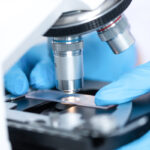What is IVF?

Fertilization with in vitro fertilization technique; is a type of fertilization performed in a laboratory when it is not possible to get pregnant naturally. The main characters, namely the egg and sperm, are taken from the biological mother and father. The change is limited only to allowing these cells to be fertilized under the necessary conditions in the external environment and to be more controlled. In vitro fertilization was a very strange method of reproduction at first. Individuals were under the idea that there could be other cells in this artificially obtained fertilization. However, this misperception changed with correct information and it is now known to everyone that the egg and sperm used completely belong to the prospective mother and father.
Today, the in vitro fertilization method is one of the most valuable methods of reproduction that is used by the rural areas. The fact that there are many couples who have to receive treatment in order to have a baby has led to the emergence of more innovations every day.
What is in vitro fertilization treatment?
There are certain techniques in this method, which is a medical treatment. Indispensably, the mother’s egg cell and the father’s sperm cell are the most essential elements. The obtained reproductive cells are kept together for fertilization. Or, fertilization is achieved by injecting sperm into the egg cell. The obtained embryos are again placed in the uterus of the mother candidate under appropriate conditions and at appropriate times, and appropriate steps are followed for them to take hold. While in vitro fertilization treatment can be roughly described in this way, there are many sub-elements to this treatment. Reaching the sperm cell is a separate medical world in itself with its stages such as egg cell maturity, collection and fertilization.
After fertilization is achieved, the sperm cell taken from the father candidate and the egg cell collected from the mother are injected into the uterus through the cervix with a special catheter. On average, there is a 50% chance of getting pregnant after this procedure. However, not all of these pregnancies progress normally, and there are risks such as miscarriage , premature birth, and ectopic pregnancy.
What is the success rate of in vitro fertilization treatments?
Here, couples should be enlightened on issues that will affect success. Because many criteria such as the couple’s age, socioeconomic opportunities, the institution’s equipment, the experience of the employees in the team, and other ailments of the body will be effective in this regard. For this, it is necessary to be able to eliminate and eliminate side conditions from negativity. With good research, the person should be informed about the situations that are at their discretion. It is necessary to choose the institution well and take into account what the doctor will say. Afterwards, it is necessary to trust experienced doctors and be patient. The rest is up to the conditions that people cannot prevent.
Couples who want to have a baby should meet with gynecology specialists for infertility treatment without waiting too long. In the future, there will be an increasing negative success rate with age. Therefore, age is one of the most talked about topics in IVF treatment.
Success rates in IVF treatments vary with age;
- If a woman who wants to get pregnant is under the age of 35, the chance of success will be around 45-50%.
- Between 35 and 38; the rate will drop to 40%.
- For women between 38 and 40, the chance of success will be limited to 30-35%,
- Unfortunately, this situation will remain at 10-20% for those aged 40 and over.
What are the risks of IVF?
The fertilization method performed in a laboratory environment when the egg and sperm cannot be fertilized naturally is called in vitro fertilization. This method is generally preferred by families who have been trying to have children for many years but have not been able to have children. There are some risks in the in vitro fertilization method, which provides positive results for many couples. The risk of miscarriage is the same in in vitro fertilization as in normal births. In addition, the medications taken during the treatment process may also bring some factors. So, what are the risks of IVF ?
- Multiple Pregnancy Risk: Multiple pregnancy , which is seen in some couples who apply for IVF treatment, is a risk seen at the very beginning of the treatment. As you can understand from its name, this risk is the birth of twins or more children than twins. It also brings risks such as diabetes, material bleeding, premature births and high blood pressure.
- Ectopic Pregnancy: Another risk seen in IVF treatment is the risk of ectopic pregnancy. This risk, which manifests itself with bleeding, is revealed by various screening methods and hormonal tests. If you have complaints such as abdominal pain or bleeding despite the pregnancy being seen after the application, we definitely recommend that you consult your doctor.





